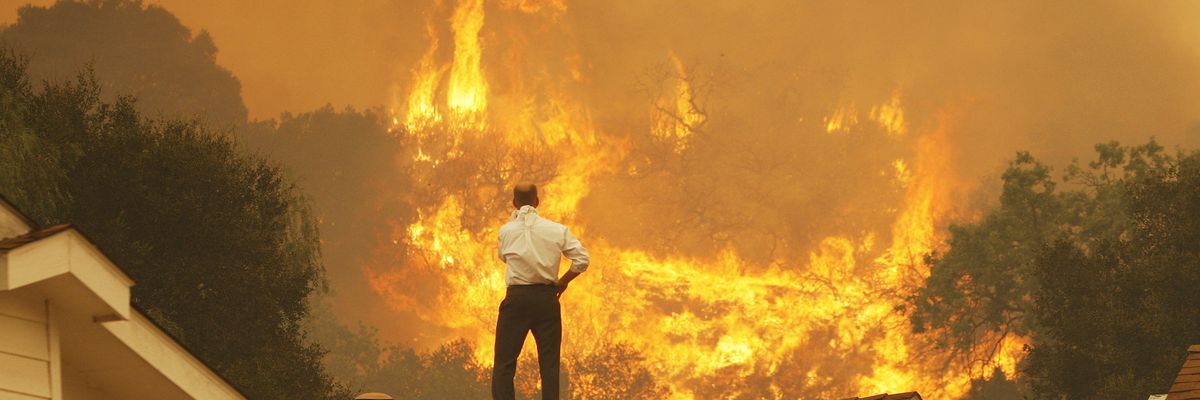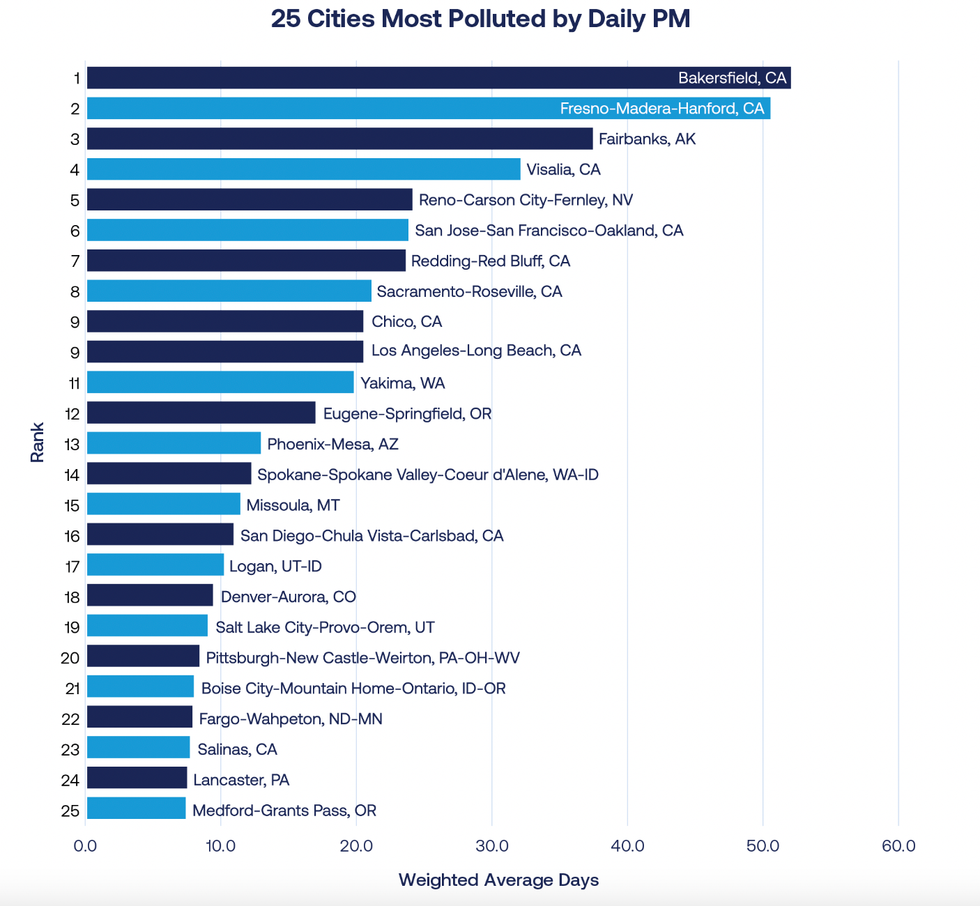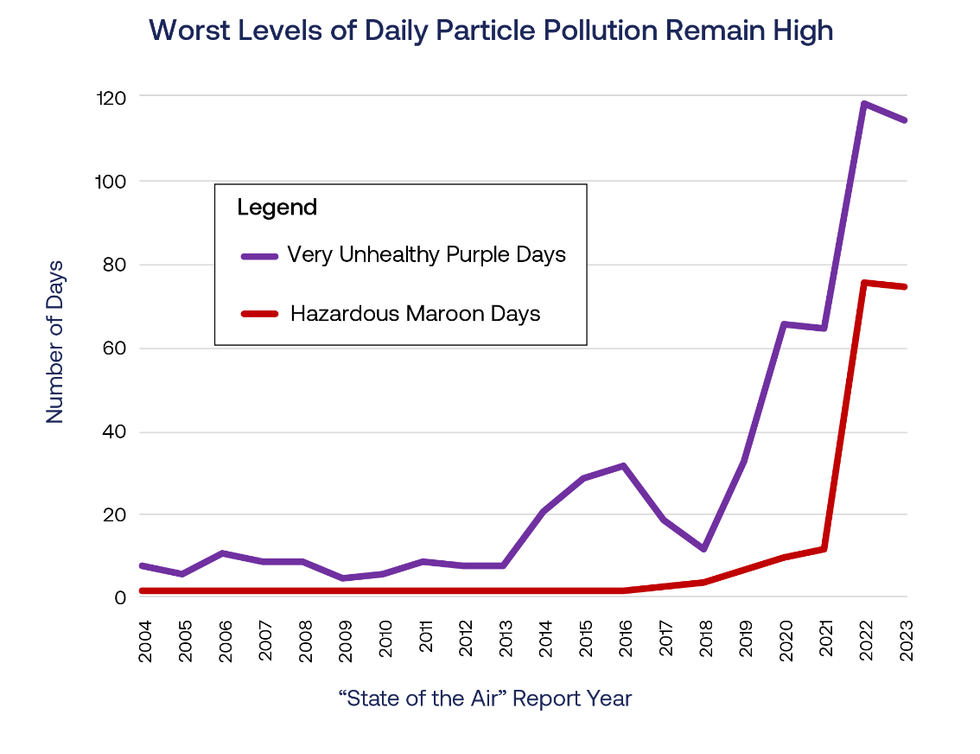As wildfire smoke from Nova Scotia drifted south this week and resulted in haze that blanketed parts of New England, New York, and New Jersey, the American Lung Association reported Thursday that rampant wildfires are triggering a significant rise in unhealthy air alerts in cities across the United States—enough to begin reversing progress policymakers have made in reducing ozone pollution.
The organization's State of the Air report warns that particle pollution—which includes soot from wildfires and has been linked to increased risk for heart attacks, asthma in children, and chronic obstructive pulmonary disease—is putting more people at risk than ever.
Overall, 17.6 million fewer people in the U.S. are breathing unhealthy air compared to the group's 2022 report, an improvement that was credited to "falling levels of ozone in many places around the country, the continuation of a positive trend that reflects the success of the Clean Air Act."
"However, the number of people living in counties with failing grades for daily spikes in deadly particle pollution was 63.7 million, the most ever reported under the current national standard," reads the report.
Eight of the 10 cities with the most days in which authorities warned of high particle pollution were in California, which experienced a relatively "mild" year for wildfires last year, but still counted nearly 7,500 wildfires including the destructive Mosquito Fire.
Other cities that are thousands of miles away from areas prone to wildfires have also reported numerous days with high levels of particle pollution, including Fargo, North Dakota and Pittsburgh.
 Source: American Lung Association, State of the Air report, 2023
Source: American Lung Association, State of the Air report, 2023
"A few weeks ago, I was speaking with someone from Colorado who was staying indoors because of smoke from forest fires in Calgary," William Barrett, national senior director for clean air advocacy at the American Lung Association (ALA), toldThe Hill Thursday.
The National Oceanic and Atmospheric Administration says planetary heating creates hotter and drier conditions, leading to longer and more severe wildfire seasons in areas that are prone to them.
Michelle Donaldson, communications director for the Lung Association of Nova Scotia and Prince Edward Island, told the CBC on Tuesday that people living far away from wildfire sites may not realize they are at risk for particle pollution.
"Wildfire smoke can travel really far and it can linger in the air for weeks at a time, so even if you can't see the smoke in your area, the particulate matter and the level of air quality go down, so people have to take precautions to protect their lung health," she said.
Emissions standards set by the Clean Air Act have been credited with significantly cutting down on ozone pollution in recent decades. New York City reported more than 50 days with high ozone pollution in the early 2000s, compared to 17 now, The Hill noted. Washington, D.C. has cut its high ozone pollution days from 60 per year to seven.
But the ALA's State of the Air report shows that the number of days when particle pollution levels are considered "very unhealthy" has skyrocketed in the last five years. Warnings were issued 10 times in 2016 compared to 113 in 2021.
The number of "hazardous" days—when the entire population of an area is likely to be affected by the pollution—has also gone up significantly. These warnings were not given between 2002 and 2014, but 73 of them were recorded in 2021.
 Source: American Lung Association, State of the Air report, 2023
Source: American Lung Association, State of the Air report, 2023
"Spikes in particle pollution related to heat, drought and wildfires are putting millions of people at risk," said the ALA, "and adding challenges to the work that states and cities are doing across the nation to clean up air pollution."

 Source: American Lung Association, State of the Air report, 2023
Source: American Lung Association, State of the Air report, 2023 Source: American Lung Association, State of the Air report, 2023
Source: American Lung Association, State of the Air report, 2023